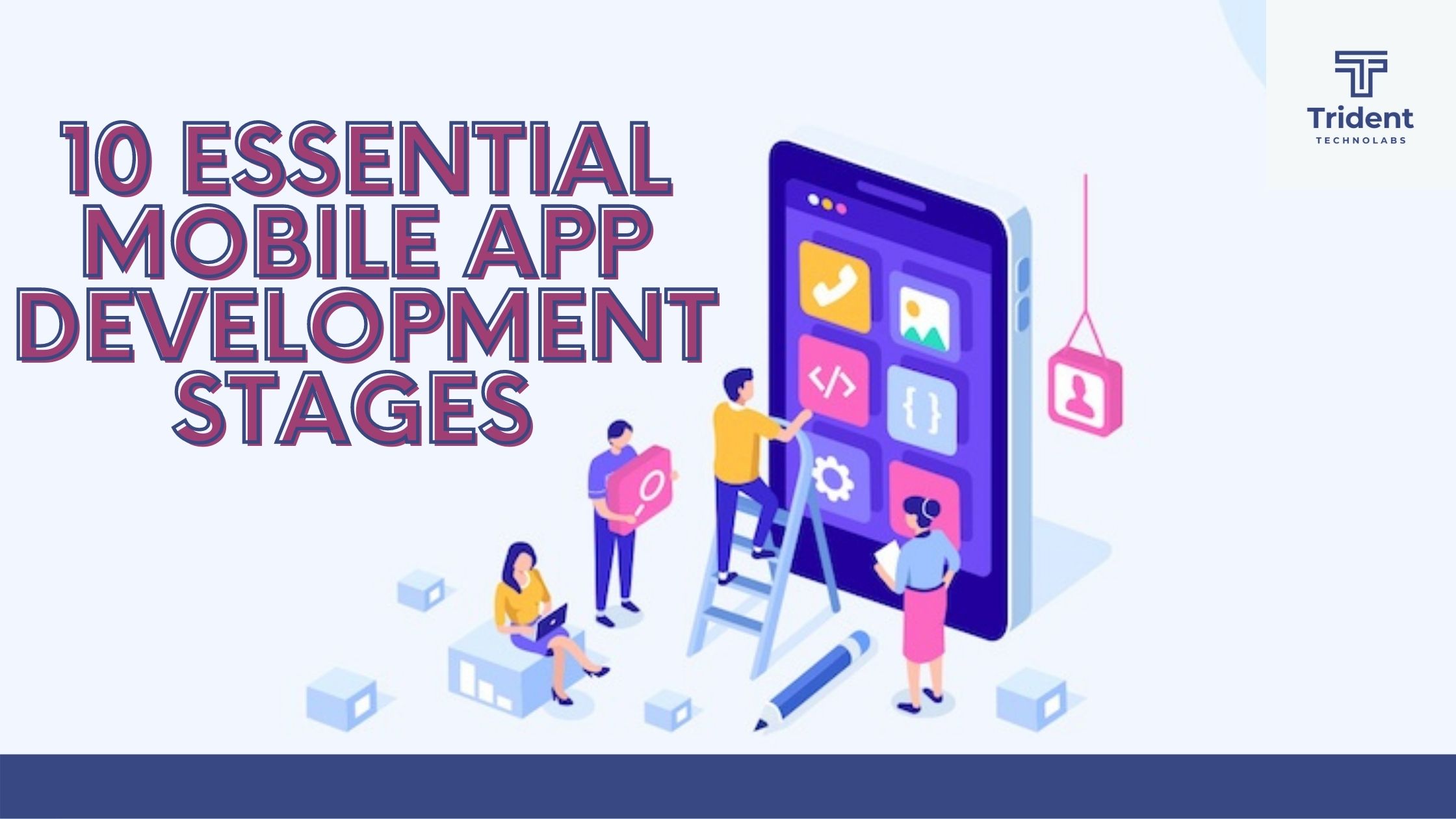
10 Essential Mobile App Development Stages for every founder/developer
As 2022 has just begun, let’s go through some facts and figures of mobile applications first:
According to Statista, the app revenue industry has already crossed the mark of $690 billion. And by 2023, it’s estimated to generate over $935 billion.
Now hear this! Roughly 88.5 thousand mobile apps are getting released every month. With 54.8% global online traffic coming from mobile phones and similar trends emerging worldwide, I have seen businesses going haywire over catching their consumers with the mobile app development process.
What started with the like of an easy ‘Snake’ game app, mobile app development is now catering to most human needs, geared up by trending technologies like IoT, Machine Learning, AR, VR, etc. But have all these technologies altered the mobile app development stages? If so, should you be more careful while developing your million-dollar-idea app?
From my years of experience in developing mobile apps, I must say that building an innovative mobile app is a tricky process. So, my advice would be to step into the field and know how the mobile app development stages work before investing all your life savings into it.
Yes, it’s okay for you to come across a number of questions while planning to develop a mobile app, such as how the mobile app development life cycle is, how to streamline the overall process, and much more. As a matter of fact, we receive such questions too and hence, decided to write an article that will walk you through the important steps of the app development process.
Let’s begin, shall we?
Mobile App Development Process Steps: An In-Depth Guide
Building a successful mobile app from scratch isn’t as easy as pie. I’ve met multiple clients with great visions of creative apps, but their products couldn’t survive the market in the long run. Reason? Mostly, they were not well-versed with the critical stages of the overall development process, and hence, what started as something great turned out to be a disaster.
Nevertheless, each app is unique in its own way, but the primary mobile app development stages remain just about the same. Let’s explore!
Step 1: Exploring Your Vision of the App

Discovery phase in app development – as distinguishable as it sounds! Your app development process begins with an exclusive idea and gradually needs a lot of research and brainstorming to acquire a clear vision for a successful mobile app.
Are you absolutely clear with your app idea? If you are, only then make your way to the next step. And if you’re doubtful, let me ask you a few questions to get your answer:
- What does your app aim primarily for?
- Who is your target audience?
- What problems will your app solve?
- Why should customers use your app?
- Will your app be unique from others?
Once you find clear answers to these questions, it’s time to develop your app strategy and research the market.
Conduct intensive market research in your industry niche, scoop up the best options you find, figure out the budget, and decide the time frame. Does creating a strategy for your future app sound like planning a trip? (Jokes aside!)
The fact is, your app strategy will largely depend on the present market trends and the ongoing problems users are facing today. Hence, it’s absolutely important for you to provide a solution through your app and give customers well-grounded reasons to use it.
So, the first and critical step of the mobile app development life cycle is evaluating and determining the benefits that your mobile app will bring to you and the end-users. The rule of thumb is – find a way to edge over your competitors and discover your profitable space.
Let’s move onto the next.
Step 2: Determining Your Project Requirements
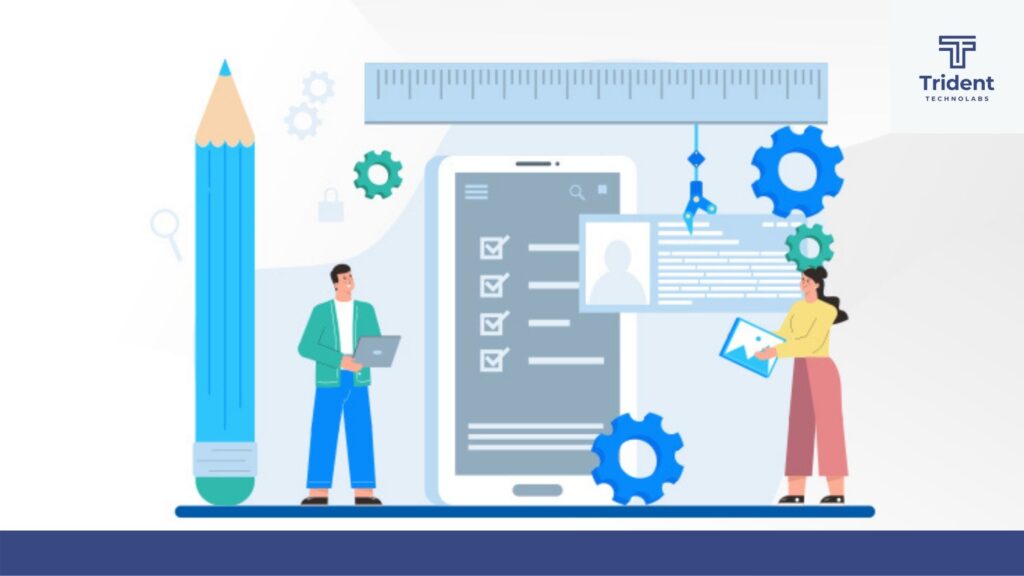
Alright, you have determined the core purpose of your mobile app. Now it’s time to decide on the platforms of your mobile app development. As you’re already clear about your target audience, choosing appropriate platforms won’t be a tough grind for you. Anyway, let me show you some stats on Android and iOS mobile users to help you fix your app development platforms.
- By June 2021, Android retained its position as the top mobile operating system with almost 73% market share
- Apple’s iOS and Google’s Android jointly share 99% of the global mobile OS market
Let’s head towards the second part now – working on your future mobile app’s features, functionalities, and business model.
Have you figured out the business flow or ways to generate revenue from your app? This is where developing a business model will help you. This is your prospect to transform your idea into action. You can choose from different business models such as freemium, subscription-based, advertising, two-sided marketplace, and more.
Start studying essential functionalities that you can offer to your customers. And if you’re not much of a tech-savvy person, hire mobile developers who can help you work with the tech stack. Ensure you implement a reliable and trending technology stack so that your app can work smoothly.
Build a Minimum Viable Product
After your product roadmap is ready, you need to focus on the four core elements that would describe your MVP – Usability, Readability, Functionality, and Design.
But why build an MVP? Let me give you some reasons:
- Check out how your product idea works in real life
- Test your business strategy
- Get feedback from customers about your app
- Discover the scope of improvements
- Analyze the app performance and implement needed changes in the final version
- Use it as a software prototype to create other products
Step 3: Signing NDA
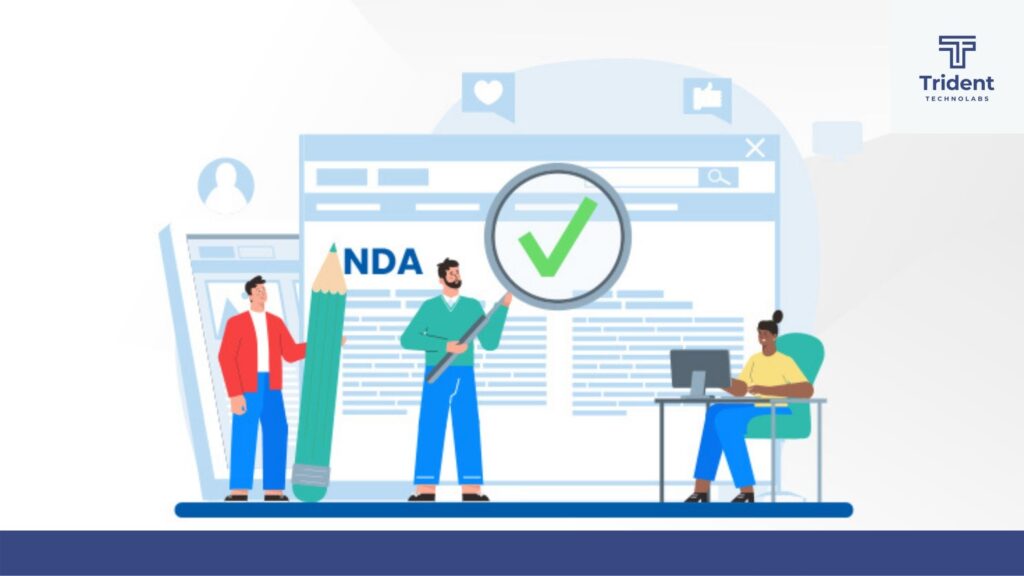
Now it’s time to make it official! While working with various clients, I have noticed one important thing they always prioritize in the mobile app development process – security. So why NDA, you ask? Because when you hire professional mobile app developers, you must ensure your idea is safe and secure with the company.
Any leading mobile app development company always signs an NDA with the client before working on the development so that both parties can avoid misunderstanding and miscommunication during the process. The NDA will basically cover every detail of your app development.
To make it more clear for you, here I’m mentioning a few points that you must consider in your NDA:
- Names of both parties signing the contract
- Detailed timeline of all the mobile app development stages
- Mode of communication
- Confidential data
- Secured project idea
- Thorough understanding of the project and features
- Tech stack
- Scrum meeting
- Files sharing, milestones of all mobile app development stages, annexures/references, and much more
Alright, everything is official and finalized. We’ll proceed to the real action now. Behold!
Step 4: Wireframes and Storyboards of the App
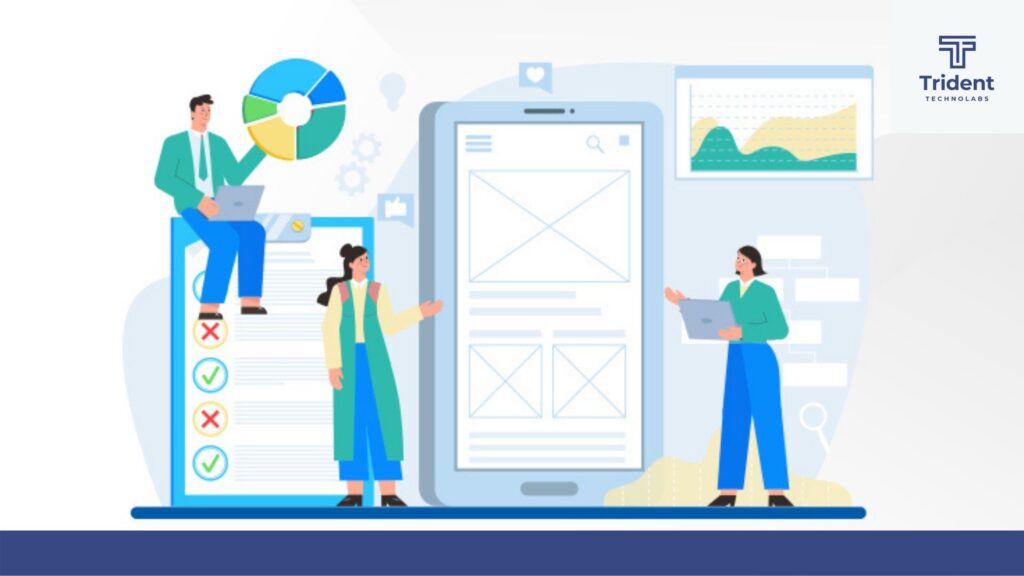
This is another critical phase of the mobile app development life cycle. So once the development team understands your project, communication methods (there is progressive software for you like Skype, Teams, Basecamp. Slack), features, budget, target group, etc., there’s this one question left – how will the design of your app be?
Yes, you have to start working on conceptualizing and visualizing the app functionality, its design, and user interface. The wireframe helps you understand how the system will flow and function. With such an estimation, your tech partner can create accurate and flawless app designs for you.
On the other side, Storyboard helps you visually chalk out the user’s journey as they explore different features and navigate through your app. Keep in mind a few things you while storyboarding:
- Visualize the appropriate layout of each screen and place all elements like icons, banners, pop-ups, buttons in the correct place in your app
- Use attractive UI but ensure you don’t compromise the user’s experience
- Don’t make your users feel lost in your app. Align every screen with its purpose effectively
- Try experimenting with the layout of your screen. Replace icons or resize buttons to make your app aesthetic and functional
Step 5: UI/UX Design and Prototype
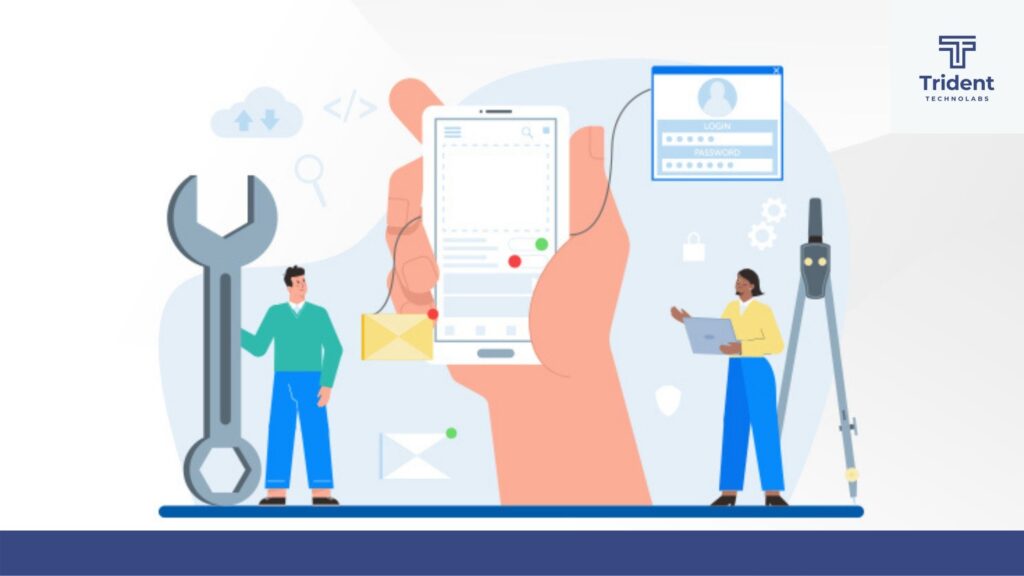
This part of the mobile app development stages has the most direct influence on the final product. This is where you decide the look and feel of your app. At Radixweb, we ask our clients a few questions like:
- Basic choice of fonts and colors
- Primary colors of the app
- Preferred apps in the market
At this point, you need to carefully structure every piece of information to embody your vision of the app. The aim here is to graphically show your elements along with the interconnection between them. Our UI/UX designers use A-grade mobile app design tools like Adobe Photoshop, Sketch, Adobe XD to provide sample screens.
All this information will then be your key resource to create a software prototype or mockup. Apart from the discovery phase in software development, building a high-fidelity prototype is also tremendously important. You can check whether the app is how you envisioned it and test it for feedback.
Even though a prototype is not really an MVP, it will help you identify any possible flaws or imperfections in your product. So, create it with utmost care as based on this prototype, developers will build your app.
Step 6: App Development
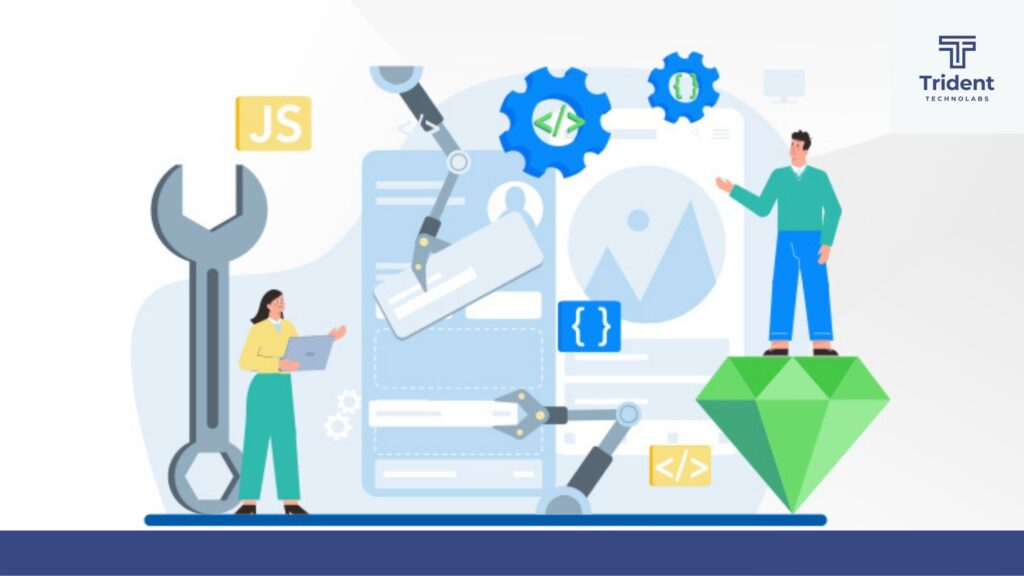
Now the actual fun begins! So, we’ve walked you through all the initial phases, and now here we are at the beginning of coding. This stage is the soul and most active of mobile app development process steps. Let me tell you how we drive the three main sub-phases of the development process:
1. The Alpha Phase
To begin with, we have an alpha phase where we will set up the core functionalities of your app without testing. Your app will hardly function at this stage, and there will be multiple glitches and bugs to fix.
2. The Beta Phase
In the second phase, we will incorporate the essential features and functionalities with a couple of light testing. Developers will fix most of the bugs, and a few will still remain. You can send out this app version to some external users for testing and feedback.
3. The Release Phase
We will run several deep tests on your app and identify all the bugs in the final phase. We will also polish up all the elements and make it fully ready to launch.
Additionally, there are three primary spheres to work in your app:
- Front-End Development
- API
- Back-End Development
Step 7: QA and Testing

Yes, your app might seem perfect and seamless to you at this later stage of the mobile app development life cycle, but trust me, you can’t ever have enough testing to ensure it’s absolutely flawless and ready to release. Besides, the earlier you follow the app testing and quality assurance trends, the better your final product will be. Needless to say, it’ll save you from unnecessary costs, time, and money.
There are various types of tests that you can perform every iteration, such as:
- Functional Testing: To verify if the features are working properly
- Usability Testing: New users test the app in terms of navigation and ease of use.
- Regression Testing: Repeated testing of every feature in each phase
- Performance Testing: Testing the response time of each task that your app performs
- User Acceptance Testing: Target customers test the app and give their feedback
- Fit and Finish Testing: Designers run this test to ensure the final product is just as they envisioned
- Device-Specific Testing: Testing the app with different devices, screen sizes, and OS combinations to ensure your app is flexible and versatile enough
Step 8: Launching a Beta Version
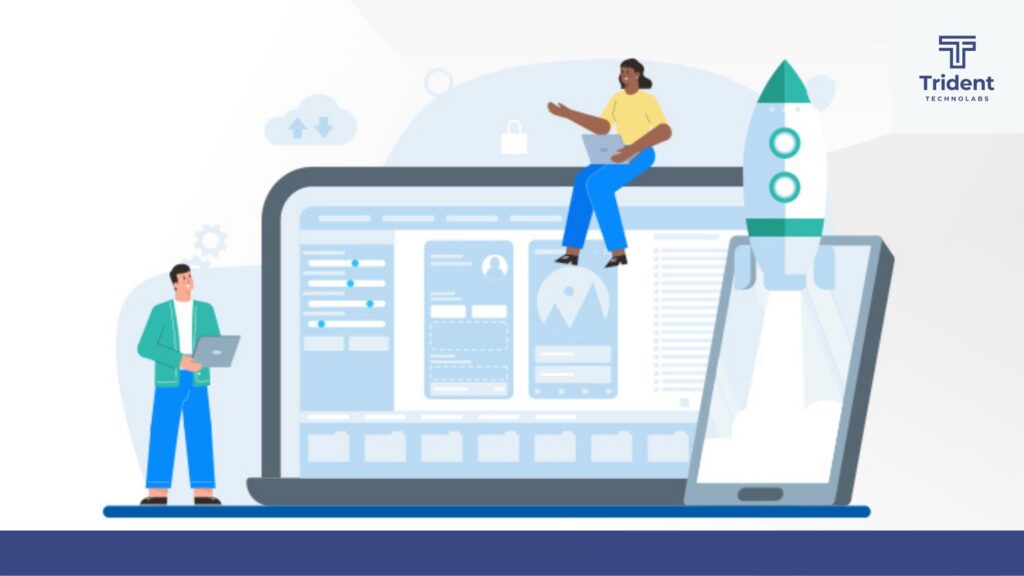
Launching a beta version can take your app mainstream and attract a handful of early users. This is actually very beneficial for your app as early adopters can provide valuable feedback and insights on its pros and cons. In return, their rating and experience will help understand the market demand and acceptance of the product as well.
This is one kind of word-of-mouth marketing that can boost your app’s reputation and help you attract even more customers.
Step 9: Final Launch/Deployment
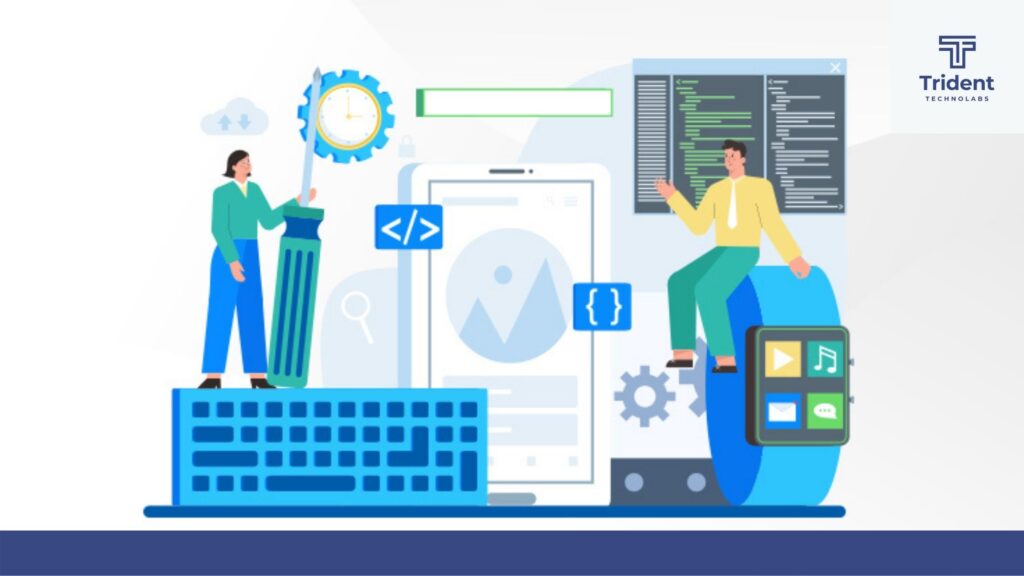
At this point in the mobile app development process steps, launching your app is like the climax of all the efforts, time, and money you have invested. If you pull off this phase well by submitting your app in the App Store or Play Store, the ball is in your court!
The key objective of this stage is to get a decent number of downloads and create a buzz among the audience for building momentum. Here’s how we approach to take on this stage:
- To successfully launch your app, app store optimization is absolutely vital. Till now, Statista reports 3.48 million apps in Play Store and 2.22 million in the App Store. All in all, we will help you make your app stand out in the market by paying a lot of focus to its presentation – name, description, keywords, and other marketing and technical aspects.
- While it’s important to make your app a success in the app stores, it’s equally crucial to rank its website high in search results. SEO is another critical field our developers pay special attention to.
- Talking about websites, developers link your app’s description in the app store with the Landing Page (your app’s website). An effective mobile app landing page is the heart of your marketing activities.
- Exclusivity is another crucial knick-knack to ensure your app hits the market and success of all the mobile app development stages. As mentioned before, we can develop a beta version of your app so that you can invite selected users and frequently engage them with high-end content. All this only to get a good number of initial downloads after the launch.
- Apart from achieving organic traffic through social media, you also have to opt for paid promotions across Google, Facebook, Instagram, and other platforms to reach a wider pool of audience. As you have already decided on your target group, carry out paid promotion accordingly to induce installations.
- Influencer Marketing is an emerging digital marketing trend that has been substituting PR to roll out awareness and information about apps. Look for potential influencers who may use your app and tap into their follower base by teaming up.
Please note, App Store usually takes a few days to weeks to review an app, while Play Store doesn’t have any review process. After your app’s deployment, our team will regularly monitor its performance and measure its success through different mobile analytics tools, along with checking feedback, reported issues, and crash reports.
Step 10: Post-Launch Support
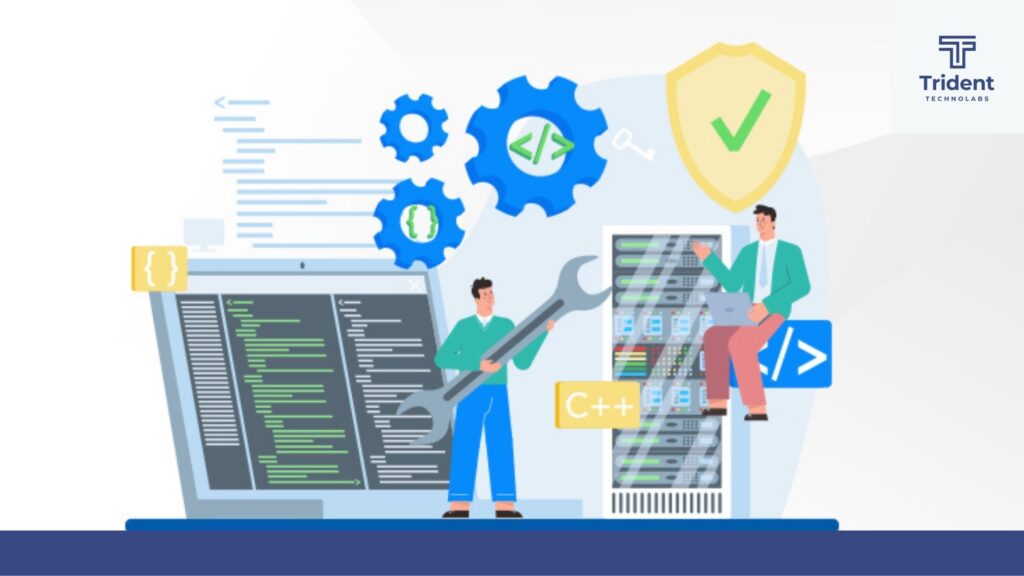
So now you’re at the edge of the mobile app development process steps. Once your app is in the hands of the users, they’ll provide feedback and reviews that will shape the future of your app. Be prepared to incorporate constructive criticism as an app update, add new features, and fix bugs to improve its performance continuously.
A new mobile app development life cycle begins as soon as you release your app in the market! During or after the process, if your app is facing any issues or bugs, our developers will immediately fix them and stick out until the app is performing as you planned in the first place.
Why Should You Opt for a Mobile App Development Process?
The current marketing landscape is pushing organizations to go the extra mile and achieve their goals. People are so connected with their mobile phones that they prefer to avail any service through progressive mobile apps.
Here I’m presenting some real-time benefits of mobile app development.
1. Increase Brand Visibility
Your mobile app can be the front face of your business as you can showcase your brand and increase awareness in an engaging and innovative way.
2. Customer Loyalty Programs
Mobile apps give you the opportunity to create a customer community and attract their attention to your business. You can give them rewards to return to your app.
3. Reach New Customers
Customers can get access to your service from any corner of the world and vice versa. With effective marketing, mobile apps make it easy to get new customers and grow your business.
4. Get a Digital Presence
Make your footprint in the digital world and increase the ROI by building a mobile app. With secured information and ease of management, mobile apps help you get a solid digital presence worldwide.
5. Improve Customer Engagement
Leave a positive brand impact on your customers by quickly responding to their issues. This process is a lot easier with mobile app development as you can solve their problems anytime, anywhere.
What’s Next?
Yes, the mobile app development steps can run you ragged and sometimes be overwhelming. But think about all the successful apps out there like Facebook, Amazon, Netflix, and Instagram that have taken users by storm. And you know the secret behind their success? A detailed and seamless mobile app development process.
So, what’s your vision of a progressive mobile app? As a leading mobile app development company, our developers are ready to breathe life into it and follow all these stages efficiently. Just share your requirements with us to provide the best experience. I know it might sound like a lot to you, but the rest will go just fine if you have come so far. Play the market and win!


Pingback: Mobile App Development Process Steps to Build Your First Successful App